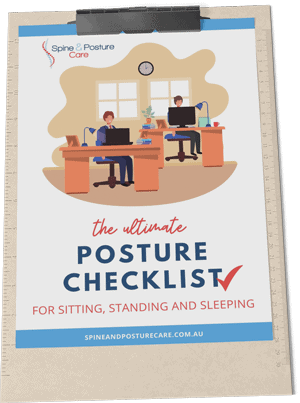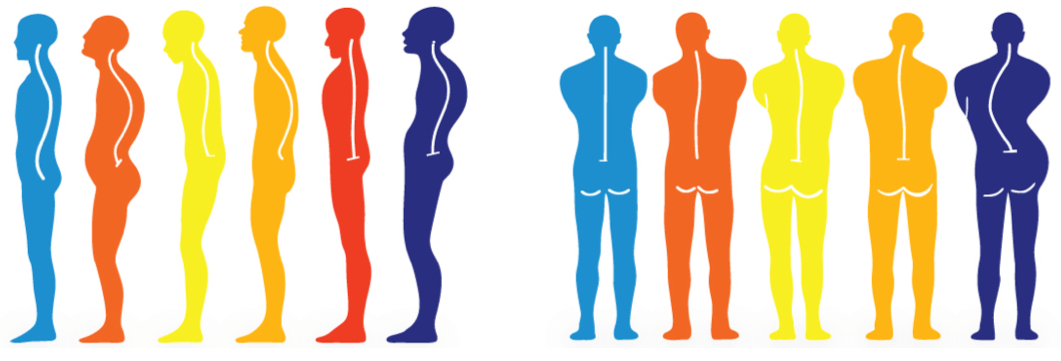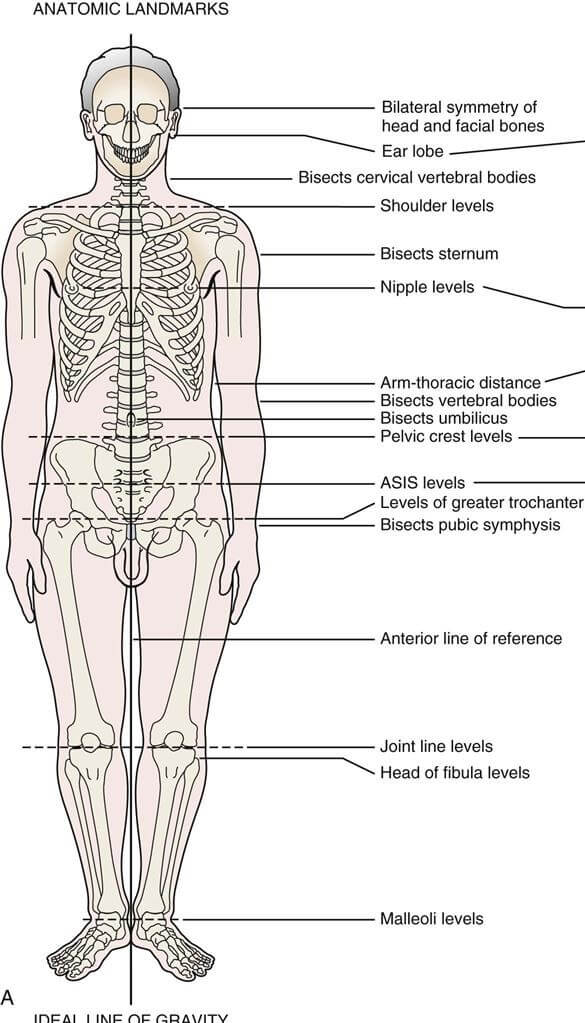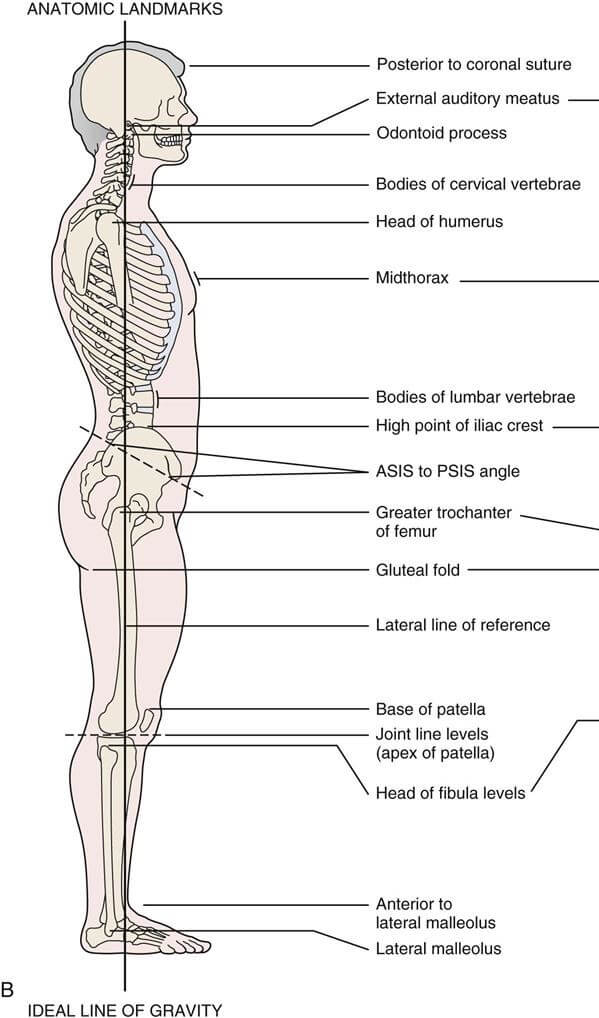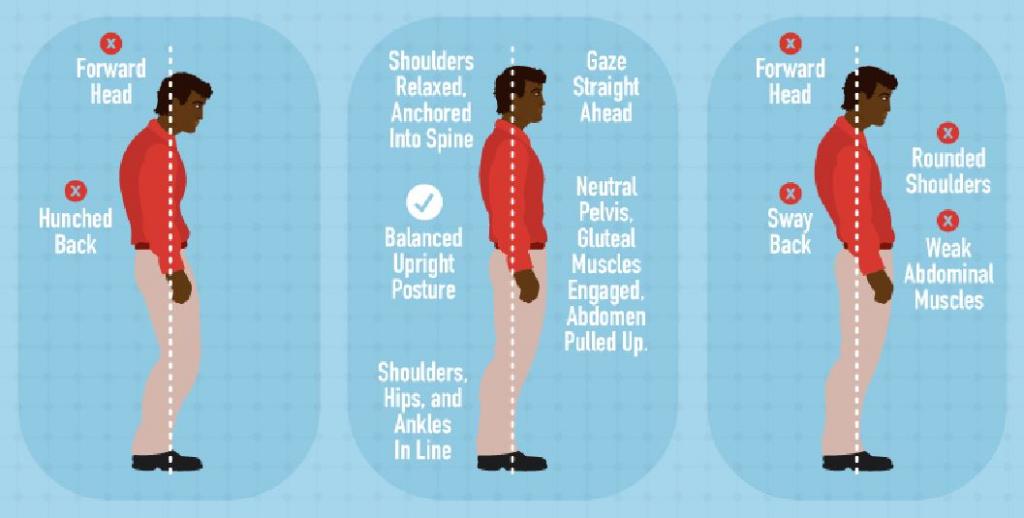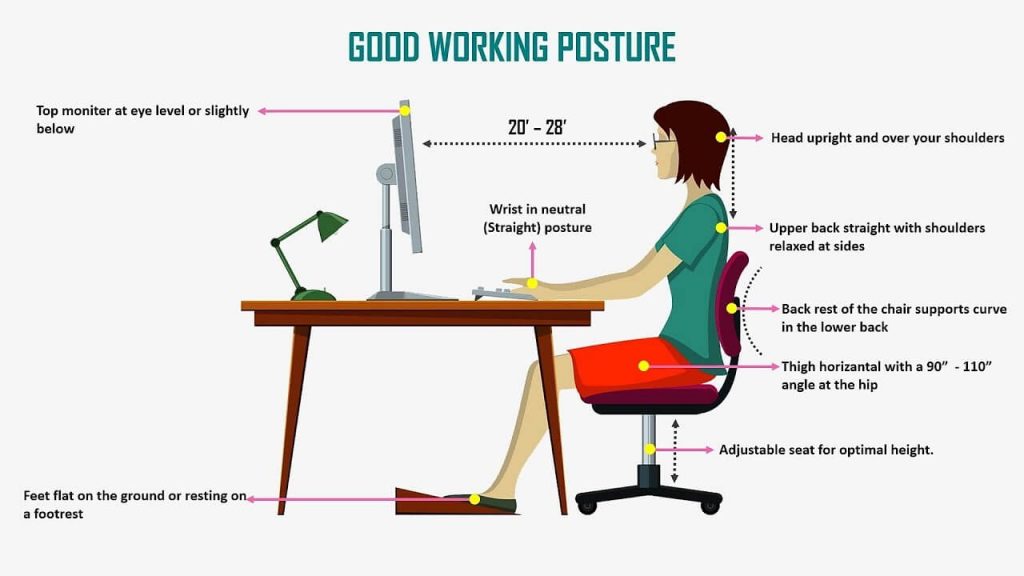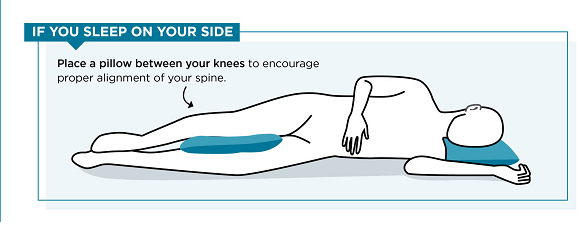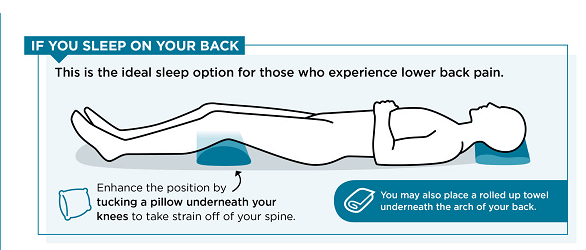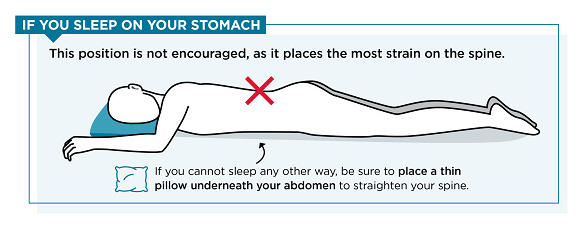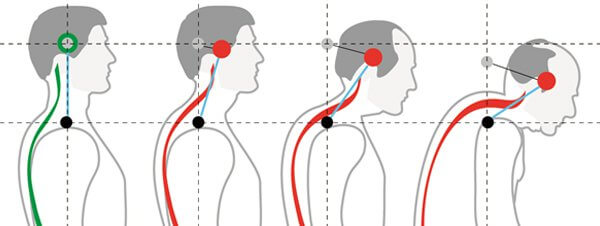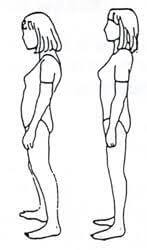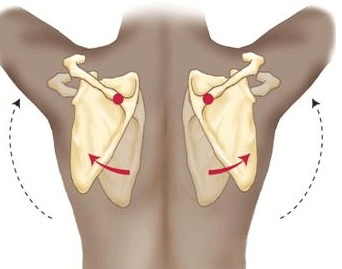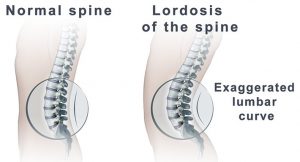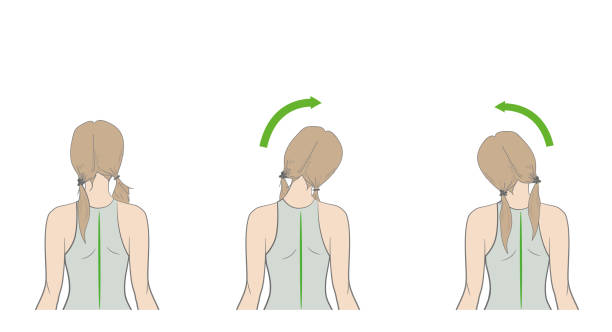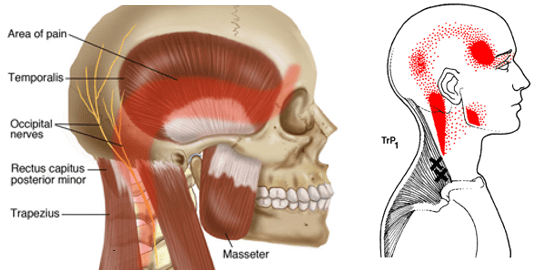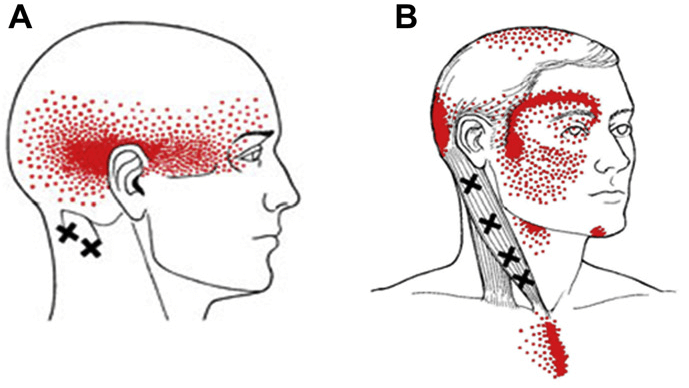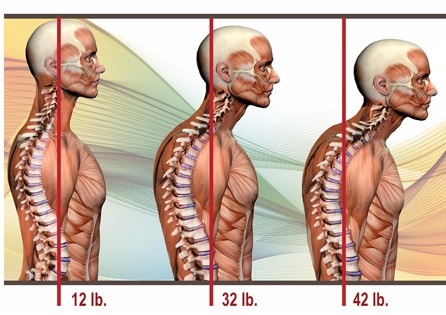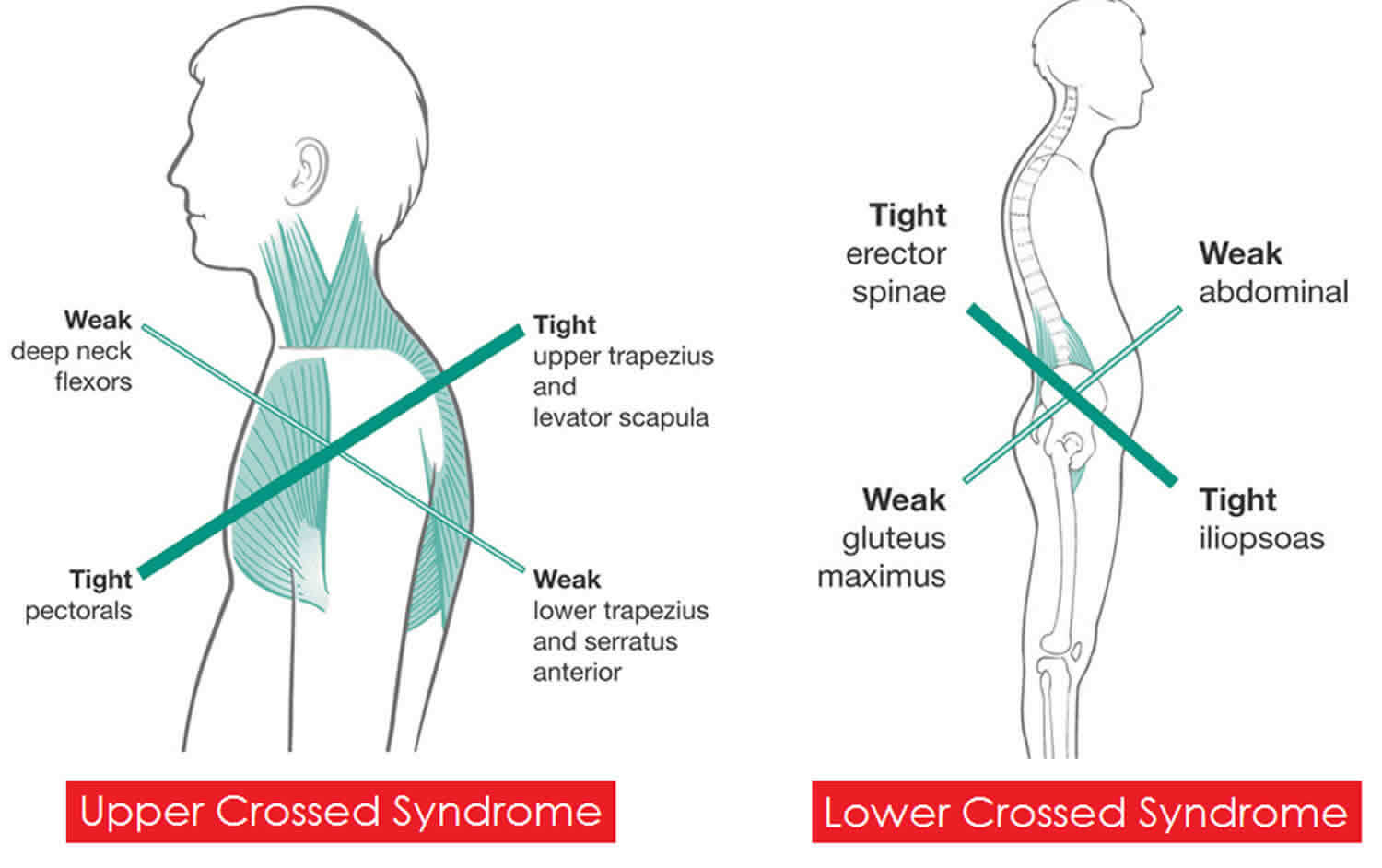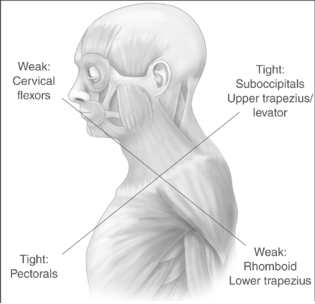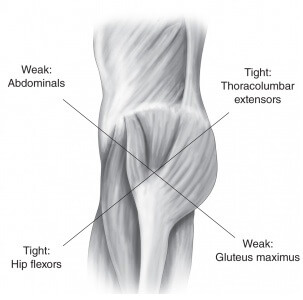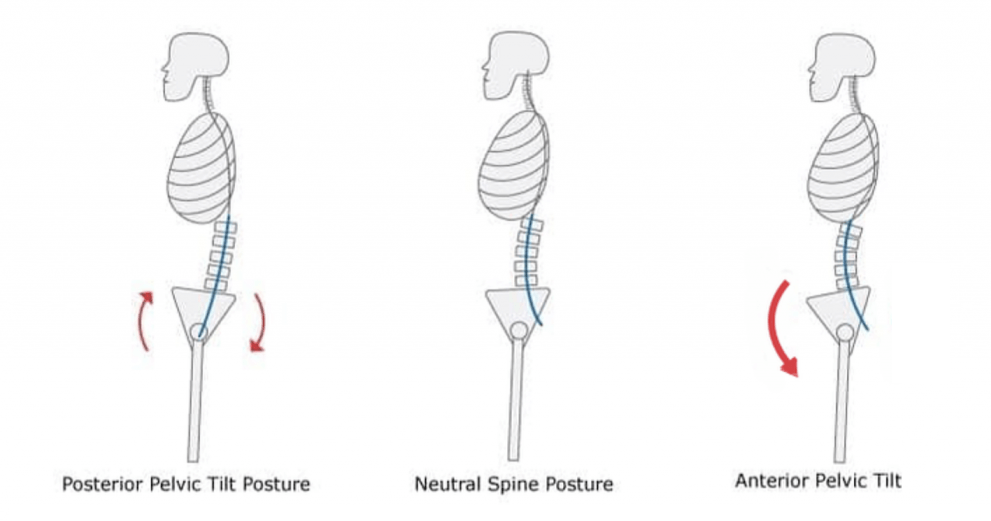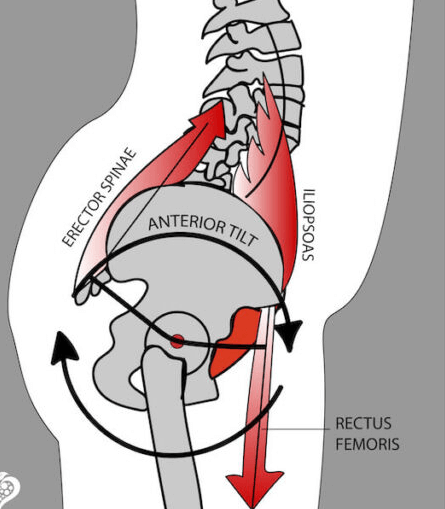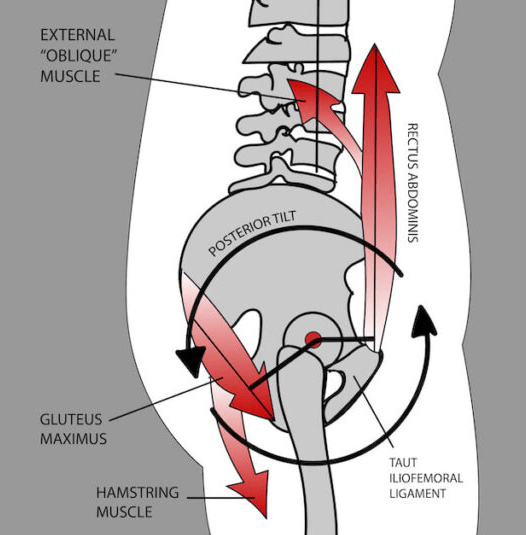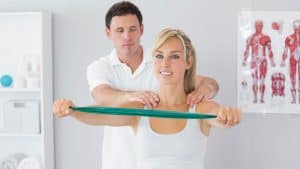Maintaining and improving your posture is now more important than ever…
Whether you:
- Sit, sleep or stand in bad positions
- Notice you don’t have good posture when looking at yourself in the mirror
- Suffer from neck and back pain due to your poor posture
We all remember our parents telling us to sit up straight and stop slouching – all for a very good reason.
Over the years, our good posture becomes compromised by the more comfortable (not necessarily the best) positions we choose to put ourselves in throughout the day.
The problem with poor posture is that it becomes a habit because that’s what we teach our bodies to do.
We all want good posture, whether it’s to feel better or look better, so in this article, we’ll be covering everything posture related!
You can read through the entire article, bits and pieces, or just click the links below and go straight to the section you’re interested in.
You’ll be surprised just how much can be done to overcome bad posture habits and get yourself back to having good posture.
- Why Is Good Posture So Important
- What Is Good Posture For Your Spine
- What To Look For If You Have Bad Posture
- Dynamic Posture Vs Static Posture
- What Is Good Standing Posture
- The Importance Of Correct Sitting Posture
- What Is The Best Sleeping Posture?
- What Is Forward Head Posture And How To Improve It
- How To Identify Rounded Shoulders
- Do You Have A Winged Scapula (Shoulder Blade)
- What Does Your Lumbar Lordosis Say About You?
- Does Exercise For Poor Posture Help
- Posture Stretches Can Help Change Your Posture
- Posture Exercises For Strengthening
- Headaches Due to Poor Posture
- Neck Pain, Lower Back Pain and Poor Posture
- Do You Experience Upper Crossed Syndrome Or Lower Crossed Syndrome
- Do You Have A Pelvic Tilt
- What About A Posture Corrector, Back Brace or Posture Brace
- Can Posture Correction Treatment Help?
1. Why Is Good Posture So Important?
Maintaining good posture – while standing, sitting or sleeping – is a simple but very important way to keep the joints and muscles in your spine and entire body moving the way they need to.
Good posture is not just about the way you look. It, more importantly, dictates the way you move and feel by giving you the support that your body needs.
Having correct posture and good spinal support is vital if you spend most of your day sitting in an office chair or standing for long periods of time.
” Always Pay Conscious Attention to Your Posture “
On the other hand, poor posture gives you a lack of back support and puts unnecessary strain on the muscles and joints in your spine.
Over time, poor posture can change the structure of your spine, leading to chronic pain and postural adaptations that you may not be able to get rid of.
2. What Is Good Posture For Your Spine
Good posture is identified by the position of your spine from both a front view and side view.
Front View
https://musculoskeletalkey.com/assessment-of-posture/
When looking at your spine from a front view, your spine should run up and down in a straight line. Any deviation from this straight line can indicate that there is a scoliosis occurring.
While the word sounds scary, scoliosis literally just means curvature in the spine.
They are quite common to have, but it’s important to note that it may cause muscle imbalances between your right and left side where some muscles in the spine work harder and other muscles weaken.
Your eyes, shoulders and hips should also be level indicating that you’re not bending or tilting more to one side compared to the other.
Side View
https://musculoskeletalkey.com/assessment-of-posture/
When looking at your spine from a side view there should be 3 gentle curves located in your neck, mid back and lower back.
Your neck has a nice “C-Shaped curve”, your mid back has the same c-shaped curve in the opposite direction and the lower back has a curve going in the same direction as the one in the neck.
Here’s a quick checklist you can use to assess how good your posture is when you’re standing:
- The hole in your ear is positioned over the middle of your shoulder
- Your shoulders are pulled back (lift your shoulders up, pull back, and push down to help achieve this)
- There is a gentle curve in your lower back
- Your pelvis is level and not tilting forward or swaying back
- Your eyes are parallel to the floor
- Your knees are even and pointing straight ahead
- Your shoulders are level and not tilting to the left or right
- Your hips are level and not tilting to the left or right
- Your arms are at your sides with your elbows straight and thumbs pointing forward
3. What To Look For If You Have Bad Posture
Just like we spoke about with good posture, bad posture does the opposite of everything mentioned above.
Whether you’re sitting, sleeping or standing, having bad posture puts stress and strain on the muscles and joints in your spine causing pain and discomfort.
The issue with bad posture is that it doesn’t develop over weeks or even months.
It occurs because we keep our bodies in these compromised positions day after day for years until our body learns that these positions are normal.
Even when they shouldn’t be.
If you’re experiencing some poor posture habits the earlier you address them the easier it becomes to change.
“Bad posture puts stress and strain on the muscles and joints in your spine”
If you’re a culprit of these posture mistakes, check out the list of bad posture signs below to see if you can start correcting some of the most common issues:
- Head pokes forward (hole in your ear sits forward of the middle of your shoulder)
- Shoulders roll forward and turn in
- Leaning on one leg
- One shoulder is higher than the other
- Hunch in your mid back
- Pelvis sways forward
- Increased curve in your lower back
If any of these apply to you, always seek professional help before attempting any posture correction for yourself so that you’re correcting the underlying issue causing your posture problems.
4. Dynamic Posture Vs Static Posture
Assessing posture in both dynamic and static positions is crucial because our bodies react in different ways depending on what we’re doing.
Dynamic posture refers to how you carry and support yourself while moving (walking, running, bending to pick something up); while static posture is how you hold yourself when you’re not moving (standing still, sitting, sleeping).
When you’re moving around (dynamic posture) your entire body is working, meaning muscles, joints, bones and ligaments are all changing position. Certain structures are contracting and shortening while others are relaxing and lengthening.
It’s essential when assessing dynamic posture to see how the surrounding areas are moving, as a change in one part of your body can cause changes in another area.
When you’re staying still (static posture) your muscles, joints bones and ligaments are fixed. The problem with static position is it causes more pressure to build in your spine compared to when you’re moving (which is why sitting for long periods of time isn’t the best)!
While you can’t help being caught in static positions, you should always try to force yourself to move around as frequently as possible to prevent excessive strain on your muscle and joints from lack of movement.
The more you do this, the less chance your body adapts to these positions and the more you minimise your chances of getting pain!
5. What is Good Standing Posture
When you’re standing, your body is supporting your entire weight meaning your spine is working at its hardest.
We rarely stop to think about how much ‘work’ our body is doing while we’re simply standing still, so having the correct standing posture helps you to avoid unnecessary stress and strain.
This is why it’s important you avoid the urge to slouch, stoop, hunch your shoulders, or lean on one leg when you’re standing.
Bad standing posture, especially if you lean to one side through your shoulders or hips leads to increased tension and strain on that part of your body.
The harder one side of your body works, the weaker the other side becomes leading to muscular imbalances and an abnormal posture since your body adapts to it.
A good technique to help improve your standing posture is to imagine there’s a string on top of your head and someone is pulling upwards on it.
This allows you to elongate your body and traction your spine, naturally helping to pull your head and shoulders back.
6. The Importance Of Correct Sitting Posture
Considering how long we sit for on a day-to-day basis, maintaining good sitting posture is critical. Studies show that we sit for an average of 10 to 11 hours each day and that’s not counting time we spend laying down while sleeping!
The longer we sit (especially without moving around) the tighter our muscles become. This is why a proper sitting posture is necessary to minimise stress and strain that we put on our spine while in this position.
“Nearly half our day is spent sitting”
The 2 most important things when it comes to good sitting posture are:
- Having the right chair to maintain proper posture
- Setting yourself up in a good posture on the chair
There are so many chairs on the market costing from a few hundred to a few thousand dollars.
In reality, it doesn’t matter how much your chair cost if you’re not using it correctly when sitting.
As long as your chair has a backrest and a lever to tilt the backrest, that should be more than enough.
In terms of how to position yourself to maintain good posture when sitting here are a few quick tips to follow:
- Slide your bottom as far back into your chair as you can.
- Make sure your back is leaning against the backrest so that it’s supporting your spine.
- Keep your feet flat on the floor. Avoid sitting cross-legged in your chair as this put more pressure on one side of your spine.
- Don’t lean your body towards one armrest.
- Take breaks to stretch or go for a walk if you’ve been sitting for too long.
- Keep a 90-degree angle at your ankles, knees and hips.
Sitting in itself isn’t necessarily bad, but when you’re sitting in bad postures for long periods of time, this can start to cause problems.
Making sure you keep moving and adjusting yourself to the best position. This will help you maintain good posture and minimise the chances of pain.
7. What is the Best Sleeping Posture?
While we can consciously make an effort to sit and stand with good posture, sleeping in good positions is much more difficult.
This is why it’s so important to be aware of what good and bad sleeping postures are.
Starting yourself in the best sleeping position before you go to bed can make a big difference in how you feel in the morning even if you move around a lot at night.
The three main positions that we sleep in are on the side, front or back. There are many variations of these positions but we’ll be focusing on these in this article.
In saying this some sleeping postures are definitely better for you than others.
Below images taken from: https://health.umms.org/2020/08/13/solutions-to-manage-nighttime-back-pain/
Side Sleeping Posture
Side sleeping is commonly known as the best sleeping posture to reduce and prevent back pain.
When sleeping on your side this puts the least amount of pressure on the muscles, joints and discs in your lower back, reducing your chances of pain.
If you’re sleeping on your side, you should make sure you’re not curling up so that your back remains straight and relaxed throughout the night.
Ideally, to help maintain this position, you should sleep on your side with your knees bent and have a pillow in between your knees to stop your pelvis from twisting and rotating while you sleep.
Back Sleeping Posture
Sleeping on your back is a position that can be as effective as side sleeping but may cause discomfort especially if you have lower back pain or a bigger than normal curve in your lower back.
An increased curve in your lower back can compress the joints in your spine leading to pain.
Sleeping on your back allows your spine to stay in a neutral relaxed position. If you do have a large curve in your lower back, suffer from back pain or just feel comfortable sleeping in this position, place a pillow underneath your knees.
This helps tilt your pelvis backwards and reduces the curve in your lower back decreasing any pain you might experience.
Front (Stomach) Sleeping Posture
Stomach sleeping is by far the worst sleeping position for your back.
When you sleep on your stomach, your pelvis tilts forward causing the joints in your back to compress. The problem with this is when you’re doing it for 6 or 7 hours as you sleep, your joints and muscles stiffen causing pain and tension.
Stomach sleeping most commonly leads to low back pain where you feel stiffness and difficulty moving, especially when you wake up in the morning.
Ideally, you want to avoid sleeping in this position and start teaching your body to sleep in a side or back posture.
“Whether You’re Sitting, Standing or Sleeping… Be Aware of Your Posture to Keep Your Spine Healthy”
In saying that, it’s important that you optimise your sleeping position and choose the best sleeping posture for your circumstances.
This is where it’s important to consult a health professional who can assess your spine, to ensure your sleep isn’t affecting your back and your sleeping posture is as effective as it can be.
8. What Is Forward Head Posture And How To Improve It
The way you hold your head directly affects how your neck, shoulders and back muscles react.
Forward head posture or forward neck posture is determined by the position of your neck when you’re sitting, sleeping or standing and what you’re doing while in these positions.
Forward head posture is measured using the hole in your ear, in relation to the position of your shoulder.
To test this out on yourself, draw a straight line from the hole in your ear towards your shoulder and see where your finger lands. If the line goes directly to the middle of your shoulder your neck is in a good position.
90% of the time this isn’t the case.
Image taken from: https://idealspine.com/posture-regainer/
The line you draw will end up at the front of your shoulder meaning you have forward neck posture.
Since this is a bad neck posture, it causes a strain and pull on the muscles in your neck and shoulders leading to pain and tension.
Some of the common causes of forward head posture are:
- Prolonged sitting
- Looking down at your phone/computer
The problem with your altered posture is that it leads to muscular imbalances where some muscles become overactive and other muscles become weak.
A simple way to fix this issue is with forward head posture exercises. They should focus on relaxing the tight muscles and strengthening the underactive muscles as well as promoting good posture habits when sitting, sleeping and standing.
9. How To Identify Rounded Shoulders
If you’re struggling with rounded shoulders, hunched shoulders or rolled shoulders the majority of the population is in the same category.
Rounded shoulders have become a significant issue both from a postural perspective and a pain point of view due to the amount of time we spend sitting.
If you’re not sure if you have rounded shoulders the best way to test it is to stand in front of a mirror in a relaxed position. Take a deep breath in, breathe out and let your body completely relax.
You need to pay attention to 2 things:
- The position of your hand in relation to your leg
- Which way your thumbs are pointing.
With good posture, your hands should sit by your side, ideally with your middle finger in line with the seam of your pants.
Your thumbs should point directly forward when your arms are at your sides.
The further forward your hands are (towards the front of your thigh) and the more your right and left thumb point towards each other the worse the position of your shoulders.
If you have rounded shoulders it’s also very common to experience forward head posture as well as hunching of your mid back.
This can lead to a postural issue known as upper crossed syndrome where you develop an imbalance of the muscles in your upper body. This causes some muscles to become tight and overactive while other muscles become weak.
Posture exercises for rounded shoulders can be effective to help stop the problem. These exercises are focused on stretching the tight muscles at the front of your body (pecs) and strengthening the weak muscles in between your shoulder blades (rhomboids, midtraps).
It’s always important to get a proper assessment and examination from a professional so you understand the underlying issues causing your rounded shoulders so you can fix the problem permanently.
10. Do you have a Winged Scapula (shoulder blade)?
If your shoulder blades stick out or are more pronounced than normal, you may have a winged scapula also known as scapula alta.
Unlike rounded shoulders, a winged scapula, or winged shoulder blade, commonly occurs when there is a postural issue, leading to a change in the structure of the spine.
This can also lead to weakness of the many muscles that help your shoulder to function correctly.
The structural or muscular change alters the natural position of your shoulder blade and causes it to stick out abnormally. Incorrect functioning of the nerve, sometimes due to trauma can also affect the position of your scapula.
Depending on the muscles and nerves affected, scapula winging can affect one, or both, of the shoulder blades. In either case, it can lead to significant pain in the long term and should always be addressed as soon as possible.
Finding the underlying cause of your winged scapula is important so the issue can be corrected and rehabilitation is effective to prevent the issue from recurring.
11. What does your Lumbar Lordosis Say About You?
Your lumbar lordosis refers to the natural inward curve that occurs in your lower back.
While everyone has a lordosis in their lower back, postural issues can cause this curve to change leading to an exaggerated curve called a hyperlordosis or a loss of curve called a hypolordosis.
Image taken from: https://www.scoliosissos.com/news/post/lumbar-lordosis
This structural change that occurs in your spine is commonly caused by bad posture and excessive sitting, leading to joint stiffness and muscle tightness as well as muscular weakness in certain areas.
An excessive lordosis leads to anterior pelvic tilting (read more here) while a loss of lordosis can cause posterior pelvic tilting also known as a sway back.
Lumbar lordosis exercises are focused on whether you have an excessive curve or reduced curve in your lower back.
With a larger than normal curve, these lordosis exercises are focused on 3 things.
- Stretches to lengthen and relax your hip flexors, Lumbar erectors and hamstrings.
- Joint exercises (knees to chest, pelvic tilting) to increase mobility
- Strength exercises (Bridge, clams, side bridge) to stabilise and increase activation in your weak muscles.
12. Does Exercise For Poor Posture Help
Exercise of any form is good for your body – we’re meant to move – and, ultimately, when we stop moving, our body and spine stop functioning like they should.
The Internet is full of all sorts of poor posture exercises, exercises to improve posture, and posture treatments – some of which are helpful and others that could easily hurt you or trigger any existing neck or back pain conditions you have.
Posture correction exercises are always based on your individual circumstances and how your body has adapted to these changes.
“When we stop moving, our body and spine stop functioning like they should”
Identifying which muscles have changed, the joints that are affected as well as the lifestyle factors that caused your posture problems will help fix your issue and stop it from coming back.
Exercises for poor posture are based around:
- Structural exercises to correct problems that have occurred in the spine
- Muscle stretches and releases to stop overactive muscles from taking over
- Muscle strengthening exercises to rehabilitate weak muscles
13. Posture Stretches Can Help Change Your Posture
Whether you have pain, bad posture or just want to increase movement and prevent problems, stretching has huge benefits.
Especially when it comes to postural issues, stretching is critical because, without it, you become limited in your ability to strengthen your weak postural muscles.
Stretching for bad posture is generally aimed at lengthening or relaxing tight/overactive muscles that have developed due to bad posture habits.
The best way to think about this is: If you have a tight muscle you should stretch it. If you have a weak muscle you should strengthen it.”
For your upper body, posture stretching is focused on your upper trapezius (traps), levator scapulae (scap), pectoralis (pec) major and minor.
For your lower body, posture stretching is focused on your iliopsoas (hip flexors), hamstrings, lumbar (lower back) extensors, quadratus lumborum and piriformis.
14. Posture Exercises For Strengthening
As mentioned above, you should always perform posture stretching before you do any posture strengthening exercises.
The reason for this is, when you have overactive and tight muscles, they tend to take over even when you’re trying to strengthen your weak muscles.
So while you have the best intention to strengthen your weak postural muscles to improve your posture, your overactive muscles end up doing most of the work.
When you stretch first, these overactive muscles relax, which allows you to get more muscle activation in your weak posture muscles giving them more chance to get stronger and improve your posture.
For your upper body, exercises to improve posture and strengthen your weak muscles include:
Chin tucks (cervical deep neck flexors), rows (mid traps/lower traps, rhomboids), Push up plus (serratus anterior).
For your lower body good posture exercises to increase strength are: Bridging, lateral raises (Glutes), Planks, side planks, dead bug (abdominals)
15. Headaches Due To Poor Posture
Headaches can have many causes, a lot of which are still unknown. While many headaches will have nothing to do with your posture, two common ones that are increasingly linked with bad posture are:
- Cervicogenic headaches
- Tension type headaches.
These 2 types of headaches are both related to changes in your neck and shoulders and will give the symptoms of a headache. These symptoms include pain in the front and back of your head but it’s referred pain because of problems in your neck.
Cervicogenic headache literally means pain felt in your head but its true source is from the neck.
This commonly comes about because of forward head posture which increases strain on the muscles and joints in your neck leading to tension. This tension builds up and sends pain signals to the head leading to ‘headaches’.
Tension type headaches, like their name suggests, comes about because of tension build up. This tension can come from multiple sources such as forward head posture, rounded shoulders, hunched back and increased stress that all increase strain on the muscles in your shoulders (upper traps) and neck.
Just like cervicogenic headaches, this tension builds up and refers to the back and front of the head leading to headaches.
Addressing the underlying postural cause of your headaches will not only get rid of the pain you experience, but stop the problem from coming back.
This can be done through exercises to address the muscular issues of poor posture and a detailed posture assessment and examination followed by posture correction to address any structural and joint issues.
16. Neck Pain, Lower Back Pain and Poor Posture
In most cases, lower back pain, mid back pain and neck pain can all be attributed to poor posture and bad posture habits.
For example, if you tend to keep your head in a forward or downward position, it increases the strain on the muscles and joints in your neck, which can lead to neck pain and headaches.
Similarly, if you hunch, stoop or slouch more often than you realise, it increases pressure on your lower back, leading to lower back pain.
While your spines is designed to take pressure and weight, the more pressure you put it under, the more likely it is to cause pain.
Just imagine you’re carrying a bowling ball. If you had to carry that bowling ball against your chest, it would be heavy, but you could do it.
What if you had to hold the ball out in front of you? It would be a lot harder right?
That’s what your spine is doing.
The further forward your head goes, the harder the muscles in your back have to work to keep you upright.
“For every inch your head goes forward, the pressure on your spine is doubled”
The longer they do this for, the higher your chance of getting pain.
While the pain and postural problems in your neck begin because of your head and shoulders going forward, the posture issues in your lower back occur due to the way your pelvis tilts forward and the curve in your lower back increases.
These two postural issues are known as upper crossed syndrome and lower crossed syndrome.
But what are they?
17. Do You Experience Upper Crossed Syndrome Or Lower Crossed Syndrome?
With poor posture becoming your body’s “normal” position over time, we start to see two common conditions.
Upper crossed syndrome refers to a postural problem in the upper half of your spine, whereas lower crossed syndrome refers to postural issues in the lower half of the spine and pelvis.
It relates to the change in certain muscle and joint groups in your upper or lower body where some muscles become overactive and other muscles become underactive due to the way you teach your posture to adapt over time.
The cross that is referred to, is an imaginary X, where one line that makes up the cross is represented by the muscles in your back and muscles in your front that get tight because of poor posture.
The other line is made up of the muscles in your back and front that get weak when you have bad posture.
These two lines intersect causing a cross or “X” shape.
What Is Upper Crossed Syndrome
In upper crossed syndrome, the three main structural changes that occur are:
- Your head goes forward
- Your shoulder round and turn in
- Your mid back hunches and the curve increases
The muscles which get overactive/tight are:
- Muscles at the back: Upper trapezius, Levator Scapula
- Muscles at the Front: Pec Major and Minor
The muscles which become weak are:
- Muscles at the back: Rhomboids, middle traps and lower traps
- Muscles at the front: Deep Neck Flexors, Serratus Anterior
Exercise for upper crossed syndrome is focused on stretching the upper traps, levator scapula, pecs and strengthening your rhomboids, mid traps and deep neck flexors.
What Is Lower Crossed Syndrome
In lower crossed syndrome, the two main structural changes that occur are:
- Your pelvis tilts forward
- The curve in your lower back increases
The muscles which get overactive/tight are:
- Muscles at the back: Erector Spinae, Quadratus Lumborum, Hamstrings
- Muscles at the Front: Hip flexors
The muscles which become weak are:
- Muscles at the back: Glutes
- Muscles at the front: Abdominals
If you’re struggling with either of these issues upper crossed syndrome exercises or lower crossed syndrome exercises can be very effective to stop the issue.
As always its important to get a proper assessment when it comes to posture correction so a posture specialist can identify exactly what the problem is and how you can fix it.
18. Do You Have A Pelvic Tilt?
Pelvic tilt refers to the angle that your pelvis is positioned in when you’re sitting or standing.
The position of your pelvis is essential for stability of your spine as changes in the pelvis can cause pressure to be distributed unevenly through the spine.
Instability in your pelvis can also lead to a change in the biomechanics of your hips, knees and ankles.
The angle that occurs between your lower back and pelvis will determine the type of pelvic tilt you have. The two tilts that occur are known as anterior pelvic tilt (duck bottom) and posterior pelvic tilt (sway back).
Anterior Pelvic Tilt
An anterior pelvic tilt occurs when the angle between your lower back and pelvis increases leading to an exaggerated or excessive curve in your lower back.
This commonly occurs as part of lower crossed syndrome and should be diagnosed correctly so it can be treated.
This forward tilt of your pelvis causes the two bones at the front of your hips (the two bones you feel when you have your hands on your hips) to point downwards and leads to a compensation in your knees where they overly straighten (hyperextension of knees).
Since the bones, muscles and ligaments in the lower back and pelvis need to adapt to the changed curve, this leads to excessive functioning of certain muscles (hip flexors, Erector Spinae and hamstrings) and weakness of your abdominals and glutes.
This change of structure in the low back causes pressure to go through the incorrect section of the joints in your lower back and can contribute to lower back pain and stiffness.
Anterior pelvic tilt exercises are based on getting backwards/posterior movement of the lower back. This helps to decrease the exaggeration of your lower back curve. Strengthening exercises are also needed to then stabilise your pelvis in a neutral position.
Posterior Pelvic Tilt
Posterior pelvic tilt works the opposite of an anterior pelvic tilt. It occurs when the entire pelvis shifts forward and the body sways backwards. For this reason, it’s also known as a sway back.
Sway back reduces activation of the muscles that work to keep your spine stable and therefore puts an increased amount of pressure and stress on your lower spine leading to lower back pain.
As the body starts to function differently based on the posterior pelvic tilt, certain muscle groups weaken while others become tight and overactive.
When the pelvis tilts posteriorly the hamstrings and the lumbar erector spinae become tight. There is also overactivity of your rectus abdominus (the middle section of your abs).
This leads to weakness in your hip flexors, glutes and your external obliques (Side of your abs).
Posterior pelvic tilt exercises are focused on stretching and reducing overactivity in the muscles mentioned above (hamstrings, erector spinae, rectus abdominus) and increasing activity in your underactive muscles (hip flexors, glutes, external obliques) with posterior pelvic tilt strengthening exercises.
19. What About A Posture Corrector, Back Brace or Posture Brace?
Most people, to a certain degree are aware that they have bad posture.
While you may know this and understand that it hasn’t happened overnight, we’re always looking for a quick fix.
This is where posture correctors, back braces and posture braces come into play.
The concept behind posture braces is great as they’re advertised to keep you in an upright position. But what about when you’re not wearing it?
“Our bodies are designed to keep us supported and upright in any position that we go into.”
If you’re wearing a posture corrector, it’s forcing you into a position that’s not natural which means another area of your body has to compensate due to this change.
When you take the brace off, your body just goes back into its old position.
The added problem is; because your muscles and joints aren’t working to keep you upright (since the back brace is doing it), these muscles became weak and underactive leading to more issues down the track.
If your body has the ability to improve and change, it’s significantly more beneficial in the short and long term to work on it through various chiropractic posture correction, posture stretches and posture exercises, rather than relying on a brace that will end up causing more harm than good.
20. Can Posture Correction Treatment Help?
When it comes to improving posture it’s important to understand what postural issues you have, how they came about and what compensations your body has gone through to adapt to these postural issues.
This is pivotal to not just fixing and improving your posture, but keeping it that way!
Seeing a professional who specialises in posture who can assess, examine and diagnose your posture problems can really help.
Whether you’re seeing a chiropractor to improve posture, visiting a physio or massage therapist, the underlying problems causing your bad posture need to be addressed so you start your rehabilitation on the right path.
“A posture specialist will identify the structural changes that have occurred, the overactive and underactive muscles and the lifestyle factors which have contributed to these changes.”
Based on this, a chiropractor trained in posture correction can help address any joint issues to reduce stiffness and correct any structural issues. They can also prescribe specific exercise/rehabilitation to strengthen your body in the new posture it’s in.
Everyones posture problems are different.
There’s no ‘one size fits all’ but understanding your posture will help you start correcting it.
Always remember: “Your best posture is your next posture” so keep moving and just start somewhere. Any change is better than no change!
Maintaining and improving your posture is now more important than ever…
Whether you:
- Sit, sleep or stand in bad positions
- Notice you don’t have good posture when looking at yourself in the mirror
- Suffer from neck and back pain due to your poor posture
We all remember our parents telling us to sit up straight and stop slouching – all for a very good reason.
Over the years, our good posture becomes compromised by the more comfortable (not necessarily the best) positions we choose to put ourselves in throughout the day.
The problem with poor posture is that it becomes a habit because that’s what we teach our bodies to do.
We all want good posture, whether it’s to feel better or look better, so in this article, we’ll be covering everything posture related!
You can read through the entire article, bits and pieces, or just click the links below and go straight to the section you’re interested in.
You’ll be surprised just how much can be done to overcome bad posture habits and get yourself back to having good posture.
- Why Is Good Posture So Important
- What Is Good Posture For Your Spine
- What To Look For If You Have Bad Posture
- Dynamic Posture Vs Static Posture
- What Is Good Standing Posture
- The Importance Of Correct Sitting Posture
- What Is The Best Sleeping Posture?
- What Is Forward Head Posture And How To Improve It
- How To Identify Rounded Shoulders
- Do You Have A Winged Scapula (Shoulder Blade)
- What Does Your Lumbar Lordosis Say About You?
- Does Exercise For Poor Posture Help
- Posture Stretches Can Help Change Your Posture
- Posture Exercises For Strengthening
- Headaches Due to Poor Posture
- Neck Pain, Lower Back Pain and Poor Posture
- Do You Experience Upper Crossed Syndrome Or Lower Crossed Syndrome
- Do You Have A Pelvic Tilt
- What About A Posture Corrector, Back Brace or Posture Brace
- Can Posture Correction Treatment Help?
1. Why Is Good Posture So Important?
Maintaining good posture – while standing, sitting or sleeping – is a simple but very important way to keep the joints and muscles in your spine and entire body moving the way they need to.
Good posture is not just about the way you look. It, more importantly, dictates the way you move and feel by giving you the support that your body needs.
Having correct posture and good spinal support is vital if you spend most of your day sitting in an office chair or standing for long periods of time.
” Always Pay Conscious Attention to Your Posture “
On the other hand, poor posture gives you a lack of back support and puts unnecessary strain on the muscles and joints in your spine.
Over time, poor posture can change the structure of your spine, leading to chronic pain and postural adaptations that you may not be able to get rid of.
2. What Is Good Posture For Your Spine
Good posture is identified by the position of your spine from both a front view and side view.
Front View
https://musculoskeletalkey.com/assessment-of-posture/
When looking at your spine from a front view, your spine should run up and down in a straight line. Any deviation from this straight line can indicate that there is a scoliosis occurring.
While the word sounds scary, scoliosis literally just means curvature in the spine.
They are quite common to have, but it’s important to note that it may cause muscle imbalances between your right and left side where some muscles in the spine work harder and other muscles weaken.
Your eyes, shoulders and hips should also be level indicating that you’re not bending or tilting more to one side compared to the other.
Side View
https://musculoskeletalkey.com/assessment-of-posture/
When looking at your spine from a side view there should be 3 gentle curves located in your neck, mid back and lower back.
Your neck has a nice “C-Shaped curve”, your mid back has the same c-shaped curve in the opposite direction and the lower back has a curve going in the same direction as the one in the neck.
Here’s a quick checklist you can use to assess how good your posture is when you’re standing:
- The hole in your ear is positioned over the middle of your shoulder
- Your shoulders are pulled back (lift your shoulders up, pull back, and push down to help achieve this)
- There is a gentle curve in your lower back
- Your pelvis is level and not tilting forward or swaying back
- Your eyes are parallel to the floor
- Your knees are even and pointing straight ahead
- Your shoulders are level and not tilting to the left or right
- Your hips are level and not tilting to the left or right
- Your arms are at your sides with your elbows straight and thumbs pointing forward
3. What To Look For If You Have Bad Posture
Just like we spoke about with good posture, bad posture does the opposite of everything mentioned above.
Whether you’re sitting, sleeping or standing, having bad posture puts stress and strain on the muscles and joints in your spine causing pain and discomfort.
The issue with bad posture is that it doesn’t develop over weeks or even months.
It occurs because we keep our bodies in these compromised positions day after day for years until our body learns that these positions are normal.
Even when they shouldn’t be.
If you’re experiencing some poor posture habits the earlier you address them the easier it becomes to change.
“Bad posture puts stress and strain on the muscles and joints in your spine”
If you’re a culprit of these posture mistakes, check out the list of bad posture signs below to see if you can start correcting some of the most common issues:
- Head pokes forward (hole in your ear sits forward of the middle of your shoulder)
- Shoulders roll forward and turn in
- Leaning on one leg
- One shoulder is higher than the other
- Hunch in your mid back
- Pelvis sways forward
- Increased curve in your lower back
If any of these apply to you, always seek professional help before attempting any posture correction for yourself so that you’re correcting the underlying issue causing your posture problems.
4. Dynamic Posture Vs Static Posture
Assessing posture in both dynamic and static positions is crucial because our bodies react in different ways depending on what we’re doing.
Dynamic posture refers to how you carry and support yourself while moving (walking, running, bending to pick something up); while static posture is how you hold yourself when you’re not moving (standing still, sitting, sleeping).
When you’re moving around (dynamic posture) your entire body is working, meaning muscles, joints, bones and ligaments are all changing position. Certain structures are contracting and shortening while others are relaxing and lengthening.
It’s essential when assessing dynamic posture to see how the surrounding areas are moving, as a change in one part of your body can cause changes in another area.
When you’re staying still (static posture) your muscles, joints bones and ligaments are fixed. The problem with static position is it causes more pressure to build in your spine compared to when you’re moving (which is why sitting for long periods of time isn’t the best)!
While you can’t help being caught in static positions, you should always try to force yourself to move around as frequently as possible to prevent excessive strain on your muscle and joints from lack of movement.
The more you do this, the less chance your body adapts to these positions and the more you minimise your chances of getting pain!
5. What is Good Standing Posture
When you’re standing, your body is supporting your entire weight meaning your spine is working at its hardest.
We rarely stop to think about how much ‘work’ our body is doing while we’re simply standing still, so having the correct standing posture helps you to avoid unnecessary stress and strain.
This is why it’s important you avoid the urge to slouch, stoop, hunch your shoulders, or lean on one leg when you’re standing.
Bad standing posture, especially if you lean to one side through your shoulders or hips leads to increased tension and strain on that part of your body.
The harder one side of your body works, the weaker the other side becomes leading to muscular imbalances and an abnormal posture since your body adapts to it.
A good technique to help improve your standing posture is to imagine there’s a string on top of your head and someone is pulling upwards on it.
This allows you to elongate your body and traction your spine, naturally helping to pull your head and shoulders back.
6. The Importance Of Correct Sitting Posture
Considering how long we sit for on a day-to-day basis, maintaining good sitting posture is critical. Studies show that we sit for an average of 10 to 11 hours each day and that’s not counting time we spend laying down while sleeping!
The longer we sit (especially without moving around) the tighter our muscles become. This is why a proper sitting posture is necessary to minimise stress and strain that we put on our spine while in this position.
“Nearly half our day is spent sitting”
The 2 most important things when it comes to good sitting posture are:
- Having the right chair to maintain proper posture
- Setting yourself up in a good posture on the chair
There are so many chairs on the market costing from a few hundred to a few thousand dollars.
In reality, it doesn’t matter how much your chair cost if you’re not using it correctly when sitting.
As long as your chair has a backrest and a lever to tilt the backrest, that should be more than enough.
In terms of how to position yourself to maintain good posture when sitting here are a few quick tips to follow:
- Slide your bottom as far back into your chair as you can.
- Make sure your back is leaning against the backrest so that it’s supporting your spine.
- Keep your feet flat on the floor. Avoid sitting cross-legged in your chair as this put more pressure on one side of your spine.
- Don’t lean your body towards one armrest.
- Take breaks to stretch or go for a walk if you’ve been sitting for too long.
- Keep a 90-degree angle at your ankles, knees and hips.
Sitting in itself isn’t necessarily bad, but when you’re sitting in bad postures for long periods of time, this can start to cause problems.
Making sure you keep moving and adjusting yourself to the best position. This will help you maintain good posture and minimise the chances of pain.
7. What is the Best Sleeping Posture?
While we can consciously make an effort to sit and stand with good posture, sleeping in good positions is much more difficult.
This is why it’s so important to be aware of what good and bad sleeping postures are.
Starting yourself in the best sleeping position before you go to bed can make a big difference in how you feel in the morning even if you move around a lot at night.
The three main positions that we sleep in are on the side, front or back. There are many variations of these positions but we’ll be focusing on these in this article.
In saying this some sleeping postures are definitely better for you than others.
Below images taken from: https://health.umms.org/2020/08/13/solutions-to-manage-nighttime-back-pain/
Side Sleeping Posture
Side sleeping is commonly known as the best sleeping posture to reduce and prevent back pain.
When sleeping on your side this puts the least amount of pressure on the muscles, joints and discs in your lower back, reducing your chances of pain.
If you’re sleeping on your side, you should make sure you’re not curling up so that your back remains straight and relaxed throughout the night.
Ideally, to help maintain this position, you should sleep on your side with your knees bent and have a pillow in between your knees to stop your pelvis from twisting and rotating while you sleep.
Back Sleeping Posture
Sleeping on your back is a position that can be as effective as side sleeping but may cause discomfort especially if you have lower back pain or a bigger than normal curve in your lower back.
An increased curve in your lower back can compress the joints in your spine leading to pain.
Sleeping on your back allows your spine to stay in a neutral relaxed position. If you do have a large curve in your lower back, suffer from back pain or just feel comfortable sleeping in this position, place a pillow underneath your knees.
This helps tilt your pelvis backwards and reduces the curve in your lower back decreasing any pain you might experience.
Front (Stomach) Sleeping Posture
Stomach sleeping is by far the worst sleeping position for your back.
When you sleep on your stomach, your pelvis tilts forward causing the joints in your back to compress. The problem with this is when you’re doing it for 6 or 7 hours as you sleep, your joints and muscles stiffen causing pain and tension.
Stomach sleeping most commonly leads to low back pain where you feel stiffness and difficulty moving, especially when you wake up in the morning.
Ideally, you want to avoid sleeping in this position and start teaching your body to sleep in a side or back posture.
“Whether You’re Sitting, Standing or Sleeping… Be Aware of Your Posture to Keep Your Spine Healthy”
In saying that, it’s important that you optimise your sleeping position and choose the best sleeping posture for your circumstances.
This is where it’s important to consult a health professional who can assess your spine, to ensure your sleep isn’t affecting your back and your sleeping posture is as effective as it can be.
8. What Is Forward Head Posture And How To Improve It
The way you hold your head directly affects how your neck, shoulders and back muscles react.
Forward head posture or forward neck posture is determined by the position of your neck when you’re sitting, sleeping or standing and what you’re doing while in these positions.
Forward head posture is measured using the hole in your ear, in relation to the position of your shoulder.
To test this out on yourself, draw a straight line from the hole in your ear towards your shoulder and see where your finger lands. If the line goes directly to the middle of your shoulder your neck is in a good position.
90% of the time this isn’t the case.
Image taken from: https://idealspine.com/posture-regainer/
The line you draw will end up at the front of your shoulder meaning you have forward neck posture.
Since this is a bad neck posture, it causes a strain and pull on the muscles in your neck and shoulders leading to pain and tension.
Some of the common causes of forward head posture are:
- Prolonged sitting
- Looking down at your phone/computer
The problem with your altered posture is that it leads to muscular imbalances where some muscles become overactive and other muscles become weak.
A simple way to fix this issue is with forward head posture exercises. They should focus on relaxing the tight muscles and strengthening the underactive muscles as well as promoting good posture habits when sitting, sleeping and standing.
9. How To Identify Rounded Shoulders
If you’re struggling with rounded shoulders, hunched shoulders or rolled shoulders the majority of the population is in the same category.
Rounded shoulders have become a significant issue both from a postural perspective and a pain point of view due to the amount of time we spend sitting.
If you’re not sure if you have rounded shoulders the best way to test it is to stand in front of a mirror in a relaxed position. Take a deep breath in, breathe out and let your body completely relax.
You need to pay attention to 2 things:
- The position of your hand in relation to your leg
- Which way your thumbs are pointing.
With good posture, your hands should sit by your side, ideally with your middle finger in line with the seam of your pants.
Your thumbs should point directly forward when your arms are at your sides.
The further forward your hands are (towards the front of your thigh) and the more your right and left thumb point towards each other the worse the position of your shoulders.
If you have rounded shoulders it’s also very common to experience forward head posture as well as hunching of your mid back.
This can lead to a postural issue known as upper crossed syndrome where you develop an imbalance of the muscles in your upper body. This causes some muscles to become tight and overactive while other muscles become weak.
Posture exercises for rounded shoulders can be effective to help stop the problem. These exercises are focused on stretching the tight muscles at the front of your body (pecs) and strengthening the weak muscles in between your shoulder blades (rhomboids, midtraps).
It’s always important to get a proper assessment and examination from a professional so you understand the underlying issues causing your rounded shoulders so you can fix the problem permanently.
10. Do you have a Winged Scapula (shoulder blade)?
If your shoulder blades stick out or are more pronounced than normal, you may have a winged scapula also known as scapula alta.
Unlike rounded shoulders, a winged scapula, or winged shoulder blade, commonly occurs when there is a postural issue, leading to a change in the structure of the spine.
This can also lead to weakness of the many muscles that help your shoulder to function correctly.
The structural or muscular change alters the natural position of your shoulder blade and causes it to stick out abnormally. Incorrect functioning of the nerve, sometimes due to trauma can also affect the position of your scapula.
Depending on the muscles and nerves affected, scapula winging can affect one, or both, of the shoulder blades. In either case, it can lead to significant pain in the long term and should always be addressed as soon as possible.
Finding the underlying cause of your winged scapula is important so the issue can be corrected and rehabilitation is effective to prevent the issue from recurring.
11. What does your Lumbar Lordosis Say About You?
Your lumbar lordosis refers to the natural inward curve that occurs in your lower back.
While everyone has a lordosis in their lower back, postural issues can cause this curve to change leading to an exaggerated curve called a hyperlordosis or a loss of curve called a hypolordosis.
Image taken from: https://www.scoliosissos.com/news/post/lumbar-lordosis
This structural change that occurs in your spine is commonly caused by bad posture and excessive sitting, leading to joint stiffness and muscle tightness as well as muscular weakness in certain areas.
An excessive lordosis leads to anterior pelvic tilting (read more here) while a loss of lordosis can cause posterior pelvic tilting also known as a sway back.
Lumbar lordosis exercises are focused on whether you have an excessive curve or reduced curve in your lower back.
With a larger than normal curve, these lordosis exercises are focused on 3 things.
- Stretches to lengthen and relax your hip flexors, Lumbar erectors and hamstrings.
- Joint exercises (knees to chest, pelvic tilting) to increase mobility
- Strength exercises (Bridge, clams, side bridge) to stabilise and increase activation in your weak muscles.
12. Does Exercise For Poor Posture Help
Exercise of any form is good for your body – we’re meant to move – and, ultimately, when we stop moving, our body and spine stop functioning like they should.
The Internet is full of all sorts of poor posture exercises, exercises to improve posture, and posture treatments – some of which are helpful and others that could easily hurt you or trigger any existing neck or back pain conditions you have.
Posture correction exercises are always based on your individual circumstances and how your body has adapted to these changes.
“When we stop moving, our body and spine stop functioning like they should”
Identifying which muscles have changed, the joints that are affected as well as the lifestyle factors that caused your posture problems will help fix your issue and stop it from coming back.
Exercises for poor posture are based around:
- Structural exercises to correct problems that have occurred in the spine
- Muscle stretches and releases to stop overactive muscles from taking over
- Muscle strengthening exercises to rehabilitate weak muscles
13. Posture Stretches Can Help Change Your Posture
Whether you have pain, bad posture or just want to increase movement and prevent problems, stretching has huge benefits.
Especially when it comes to postural issues, stretching is critical because, without it, you become limited in your ability to strengthen your weak postural muscles.
Stretching for bad posture is generally aimed at lengthening or relaxing tight/overactive muscles that have developed due to bad posture habits.
The best way to think about this is: If you have a tight muscle you should stretch it. If you have a weak muscle you should strengthen it.”
For your upper body, posture stretching is focused on your upper trapezius (traps), levator scapulae (scap), pectoralis (pec) major and minor.
For your lower body, posture stretching is focused on your iliopsoas (hip flexors), hamstrings, lumbar (lower back) extensors, quadratus lumborum and piriformis.
14. Posture Exercises For Strengthening
As mentioned above, you should always perform posture stretching before you do any posture strengthening exercises.
The reason for this is, when you have overactive and tight muscles, they tend to take over even when you’re trying to strengthen your weak muscles.
So while you have the best intention to strengthen your weak postural muscles to improve your posture, your overactive muscles end up doing most of the work.
When you stretch first, these overactive muscles relax, which allows you to get more muscle activation in your weak posture muscles giving them more chance to get stronger and improve your posture.
For your upper body, exercises to improve posture and strengthen your weak muscles include:
Chin tucks (cervical deep neck flexors), rows (mid traps/lower traps, rhomboids), Push up plus (serratus anterior).
For your lower body good posture exercises to increase strength are: Bridging, lateral raises (Glutes), Planks, side planks, dead bug (abdominals)
15. Headaches Due To Poor Posture
Headaches can have many causes, a lot of which are still unknown. While many headaches will have nothing to do with your posture, two common ones that are increasingly linked with bad posture are:
- Cervicogenic headaches
- Tension type headaches.
These 2 types of headaches are both related to changes in your neck and shoulders and will give the symptoms of a headache. These symptoms include pain in the front and back of your head but it’s referred pain because of problems in your neck.
Cervicogenic headache literally means pain felt in your head but its true source is from the neck.
This commonly comes about because of forward head posture which increases strain on the muscles and joints in your neck leading to tension. This tension builds up and sends pain signals to the head leading to ‘headaches’.
Tension type headaches, like their name suggests, comes about because of tension build up. This tension can come from multiple sources such as forward head posture, rounded shoulders, hunched back and increased stress that all increase strain on the muscles in your shoulders (upper traps) and neck.
Just like cervicogenic headaches, this tension builds up and refers to the back and front of the head leading to headaches.
Addressing the underlying postural cause of your headaches will not only get rid of the pain you experience, but stop the problem from coming back.
This can be done through exercises to address the muscular issues of poor posture and a detailed posture assessment and examination followed by posture correction to address any structural and joint issues.
16. Neck Pain, Lower Back Pain and Poor Posture
In most cases, lower back pain, mid back pain and neck pain can all be attributed to poor posture and bad posture habits.
For example, if you tend to keep your head in a forward or downward position, it increases the strain on the muscles and joints in your neck, which can lead to neck pain and headaches.
Similarly, if you hunch, stoop or slouch more often than you realise, it increases pressure on your lower back, leading to lower back pain.
While your spines is designed to take pressure and weight, the more pressure you put it under, the more likely it is to cause pain.
Just imagine you’re carrying a bowling ball. If you had to carry that bowling ball against your chest, it would be heavy, but you could do it.
What if you had to hold the ball out in front of you? It would be a lot harder right?
That’s what your spine is doing.
The further forward your head goes, the harder the muscles in your back have to work to keep you upright.
“For every inch your head goes forward, the pressure on your spine is doubled”
The longer they do this for, the higher your chance of getting pain.
While the pain and postural problems in your neck begin because of your head and shoulders going forward, the posture issues in your lower back occur due to the way your pelvis tilts forward and the curve in your lower back increases.
These two postural issues are known as upper crossed syndrome and lower crossed syndrome.
But what are they?
17. Do You Experience Upper Crossed Syndrome Or Lower Crossed Syndrome?
With poor posture becoming your body’s “normal” position over time, we start to see two common conditions.
Upper crossed syndrome refers to a postural problem in the upper half of your spine, whereas lower crossed syndrome refers to postural issues in the lower half of the spine and pelvis.
It relates to the change in certain muscle and joint groups in your upper or lower body where some muscles become overactive and other muscles become underactive due to the way you teach your posture to adapt over time.
The cross that is referred to, is an imaginary X, where one line that makes up the cross is represented by the muscles in your back and muscles in your front that get tight because of poor posture.
The other line is made up of the muscles in your back and front that get weak when you have bad posture.
These two lines intersect causing a cross or “X” shape.
What Is Upper Crossed Syndrome
In upper crossed syndrome, the three main structural changes that occur are:
- Your head goes forward
- Your shoulder round and turn in
- Your mid back hunches and the curve increases
The muscles which get overactive/tight are:
- Muscles at the back: Upper trapezius, Levator Scapula
- Muscles at the Front: Pec Major and Minor
The muscles which become weak are:
- Muscles at the back: Rhomboids, middle traps and lower traps
- Muscles at the front: Deep Neck Flexors, Serratus Anterior
Exercise for upper crossed syndrome is focused on stretching the upper traps, levator scapula, pecs and strengthening your rhomboids, mid traps and deep neck flexors.
What Is Lower Crossed Syndrome
In lower crossed syndrome, the two main structural changes that occur are:
- Your pelvis tilts forward
- The curve in your lower back increases
The muscles which get overactive/tight are:
- Muscles at the back: Erector Spinae, Quadratus Lumborum, Hamstrings
- Muscles at the Front: Hip flexors
The muscles which become weak are:
- Muscles at the back: Glutes
- Muscles at the front: Abdominals
If you’re struggling with either of these issues upper crossed syndrome exercises or lower crossed syndrome exercises can be very effective to stop the issue.
As always its important to get a proper assessment when it comes to posture correction so a posture specialist can identify exactly what the problem is and how you can fix it.
18. Do You Have A Pelvic Tilt?
Pelvic tilt refers to the angle that your pelvis is positioned in when you’re sitting or standing.
The position of your pelvis is essential for stability of your spine as changes in the pelvis can cause pressure to be distributed unevenly through the spine.
Instability in your pelvis can also lead to a change in the biomechanics of your hips, knees and ankles.
The angle that occurs between your lower back and pelvis will determine the type of pelvic tilt you have. The two tilts that occur are known as anterior pelvic tilt (duck bottom) and posterior pelvic tilt (sway back).
Anterior Pelvic Tilt
An anterior pelvic tilt occurs when the angle between your lower back and pelvis increases leading to an exaggerated or excessive curve in your lower back.
This commonly occurs as part of lower crossed syndrome and should be diagnosed correctly so it can be treated.
This forward tilt of your pelvis causes the two bones at the front of your hips (the two bones you feel when you have your hands on your hips) to point downwards and leads to a compensation in your knees where they overly straighten (hyperextension of knees).
Since the bones, muscles and ligaments in the lower back and pelvis need to adapt to the changed curve, this leads to excessive functioning of certain muscles (hip flexors, Erector Spinae and hamstrings) and weakness of your abdominals and glutes.
This change of structure in the low back causes pressure to go through the incorrect section of the joints in your lower back and can contribute to lower back pain and stiffness.
Anterior pelvic tilt exercises are based on getting backwards/posterior movement of the lower back. This helps to decrease the exaggeration of your lower back curve. Strengthening exercises are also needed to then stabilise your pelvis in a neutral position.
Posterior Pelvic Tilt
Posterior pelvic tilt works the opposite of an anterior pelvic tilt. It occurs when the entire pelvis shifts forward and the body sways backwards. For this reason, it’s also known as a sway back.
Sway back reduces activation of the muscles that work to keep your spine stable and therefore puts an increased amount of pressure and stress on your lower spine leading to lower back pain.
As the body starts to function differently based on the posterior pelvic tilt, certain muscle groups weaken while others become tight and overactive.
When the pelvis tilts posteriorly the hamstrings and the lumbar erector spinae become tight. There is also overactivity of your rectus abdominus (the middle section of your abs).
This leads to weakness in your hip flexors, glutes and your external obliques (Side of your abs).
Posterior pelvic tilt exercises are focused on stretching and reducing overactivity in the muscles mentioned above (hamstrings, erector spinae, rectus abdominus) and increasing activity in your underactive muscles (hip flexors, glutes, external obliques) with posterior pelvic tilt strengthening exercises.
19. What About A Posture Corrector, Back Brace or Posture Brace?
Most people, to a certain degree are aware that they have bad posture.
While you may know this and understand that it hasn’t happened overnight, we’re always looking for a quick fix.
This is where posture correctors, back braces and posture braces come into play.
The concept behind posture braces is great as they’re advertised to keep you in an upright position. But what about when you’re not wearing it?
“Our bodies are designed to keep us supported and upright in any position that we go into.”
If you’re wearing a posture corrector, it’s forcing you into a position that’s not natural which means another area of your body has to compensate due to this change.
When you take the brace off, your body just goes back into its old position.
The added problem is; because your muscles and joints aren’t working to keep you upright (since the back brace is doing it), these muscles became weak and underactive leading to more issues down the track.
If your body has the ability to improve and change, it’s significantly more beneficial in the short and long term to work on it through various chiropractic posture correction, posture stretches and posture exercises, rather than relying on a brace that will end up causing more harm than good.
20. Can Posture Correction Treatment Help?
When it comes to improving posture it’s important to understand what postural issues you have, how they came about and what compensations your body has gone through to adapt to these postural issues.
This is pivotal to not just fixing and improving your posture, but keeping it that way!
Seeing a professional who specialises in posture who can assess, examine and diagnose your posture problems can really help.
Whether you’re seeing a chiropractor to improve posture, visiting a physio or massage therapist, the underlying problems causing your bad posture need to be addressed so you start your rehabilitation on the right path.
“A posture specialist will identify the structural changes that have occurred, the overactive and underactive muscles and the lifestyle factors which have contributed to these changes.”
Based on this, a chiropractor trained in posture correction can help address any joint issues to reduce stiffness and correct any structural issues. They can also prescribe specific exercise/rehabilitation to strengthen your body in the new posture it’s in.
Everyones posture problems are different.
There’s no ‘one size fits all’ but understanding your posture will help you start correcting it.
Always remember: “Your best posture is your next posture” so keep moving and just start somewhere. Any change is better than no change!
Maintaining and improving your posture is now more important than ever…
Whether you:
- Sit, sleep or stand in bad positions
- Notice you don’t have good posture when looking at yourself in the mirror
- Suffer from neck and back pain due to your poor posture
We all remember our parents telling us to sit up straight and stop slouching – all for a very good reason.
Over the years, our good posture becomes compromised by the more comfortable (not necessarily the best) positions we choose to put ourselves in throughout the day.
The problem with poor posture is that it becomes a habit because that’s what we teach our bodies to do.
We all want good posture, whether it’s to feel better or look better, so in this article, we’ll be covering everything posture related!
You can read through the entire article, bits and pieces, or just click the links below and go straight to the section you’re interested in.
You’ll be surprised just how much can be done to overcome bad posture habits and get yourself back to having good posture.
- Why Is Good Posture So Important
- What Is Good Posture For Your Spine
- What To Look For If You Have Bad Posture
- Dynamic Posture Vs Static Posture
- What Is Good Standing Posture
- The Importance Of Correct Sitting Posture
- What Is The Best Sleeping Posture?
- What Is Forward Head Posture And How To Improve It
- How To Identify Rounded Shoulders
- Do You Have A Winged Scapula (Shoulder Blade)
- What Does Your Lumbar Lordosis Say About You?
- Does Exercise For Poor Posture Help
- Posture Stretches Can Help Change Your Posture
- Posture Exercises For Strengthening
- Headaches Due to Poor Posture
- Neck Pain, Lower Back Pain and Poor Posture
- Do You Experience Upper Crossed Syndrome Or Lower Crossed Syndrome
- Do You Have A Pelvic Tilt
- What About A Posture Corrector, Back Brace or Posture Brace
- Can Posture Correction Treatment Help?
1. Why Is Good Posture So Important?
Maintaining good posture – while standing, sitting or sleeping – is a simple but very important way to keep the joints and muscles in your spine and entire body moving the way they need to.
Good posture is not just about the way you look. It, more importantly, dictates the way you move and feel by giving you the support that your body needs.
Having correct posture and good spinal support is vital if you spend most of your day sitting in an office chair or standing for long periods of time.
” Always Pay Conscious Attention to Your Posture “
On the other hand, poor posture gives you a lack of back support and puts unnecessary strain on the muscles and joints in your spine.
Over time, poor posture can change the structure of your spine, leading to chronic pain and postural adaptations that you may not be able to get rid of.
2. What Is Good Posture For Your Spine
Good posture is identified by the position of your spine from both a front view and side view.
Front View
https://musculoskeletalkey.com/assessment-of-posture/
When looking at your spine from a front view, your spine should run up and down in a straight line. Any deviation from this straight line can indicate that there is a scoliosis occurring.
While the word sounds scary, scoliosis literally just means curvature in the spine.
They are quite common to have, but it’s important to note that it may cause muscle imbalances between your right and left side where some muscles in the spine work harder and other muscles weaken.
Your eyes, shoulders and hips should also be level indicating that you’re not bending or tilting more to one side compared to the other.
Side View
https://musculoskeletalkey.com/assessment-of-posture/
When looking at your spine from a side view there should be 3 gentle curves located in your neck, mid back and lower back.
Your neck has a nice “C-Shaped curve”, your mid back has the same c-shaped curve in the opposite direction and the lower back has a curve going in the same direction as the one in the neck.
Here’s a quick checklist you can use to assess how good your posture is when you’re standing:
- The hole in your ear is positioned over the middle of your shoulder
- Your shoulders are pulled back (lift your shoulders up, pull back, and push down to help achieve this)
- There is a gentle curve in your lower back
- Your pelvis is level and not tilting forward or swaying back
- Your eyes are parallel to the floor
- Your knees are even and pointing straight ahead
- Your shoulders are level and not tilting to the left or right
- Your hips are level and not tilting to the left or right
- Your arms are at your sides with your elbows straight and thumbs pointing forward
3. What To Look For If You Have Bad Posture
Just like we spoke about with good posture, bad posture does the opposite of everything mentioned above.
Whether you’re sitting, sleeping or standing, having bad posture puts stress and strain on the muscles and joints in your spine causing pain and discomfort.
The issue with bad posture is that it doesn’t develop over weeks or even months.
It occurs because we keep our bodies in these compromised positions day after day for years until our body learns that these positions are normal.
Even when they shouldn’t be.
If you’re experiencing some poor posture habits the earlier you address them the easier it becomes to change.
“Bad posture puts stress and strain on the muscles and joints in your spine”
If you’re a culprit of these posture mistakes, check out the list of bad posture signs below to see if you can start correcting some of the most common issues:
- Head pokes forward (hole in your ear sits forward of the middle of your shoulder)
- Shoulders roll forward and turn in
- Leaning on one leg
- One shoulder is higher than the other
- Hunch in your mid back
- Pelvis sways forward
- Increased curve in your lower back
If any of these apply to you, always seek professional help before attempting any posture correction for yourself so that you’re correcting the underlying issue causing your posture problems.
4. Dynamic Posture Vs Static Posture
Assessing posture in both dynamic and static positions is crucial because our bodies react in different ways depending on what we’re doing.
Dynamic posture refers to how you carry and support yourself while moving (walking, running, bending to pick something up); while static posture is how you hold yourself when you’re not moving (standing still, sitting, sleeping).
When you’re moving around (dynamic posture) your entire body is working, meaning muscles, joints, bones and ligaments are all changing position. Certain structures are contracting and shortening while others are relaxing and lengthening.
It’s essential when assessing dynamic posture to see how the surrounding areas are moving, as a change in one part of your body can cause changes in another area.
When you’re staying still (static posture) your muscles, joints bones and ligaments are fixed. The problem with static position is it causes more pressure to build in your spine compared to when you’re moving (which is why sitting for long periods of time isn’t the best)!
While you can’t help being caught in static positions, you should always try to force yourself to move around as frequently as possible to prevent excessive strain on your muscle and joints from lack of movement.
The more you do this, the less chance your body adapts to these positions and the more you minimise your chances of getting pain!
5. What is Good Standing Posture
When you’re standing, your body is supporting your entire weight meaning your spine is working at its hardest.
We rarely stop to think about how much ‘work’ our body is doing while we’re simply standing still, so having the correct standing posture helps you to avoid unnecessary stress and strain.
This is why it’s important you avoid the urge to slouch, stoop, hunch your shoulders, or lean on one leg when you’re standing.
Bad standing posture, especially if you lean to one side through your shoulders or hips leads to increased tension and strain on that part of your body.
The harder one side of your body works, the weaker the other side becomes leading to muscular imbalances and an abnormal posture since your body adapts to it.
A good technique to help improve your standing posture is to imagine there’s a string on top of your head and someone is pulling upwards on it.
This allows you to elongate your body and traction your spine, naturally helping to pull your head and shoulders back.
6. The Importance Of Correct Sitting Posture
Considering how long we sit for on a day-to-day basis, maintaining good sitting posture is critical. Studies show that we sit for an average of 10 to 11 hours each day and that’s not counting time we spend laying down while sleeping!
The longer we sit (especially without moving around) the tighter our muscles become. This is why a proper sitting posture is necessary to minimise stress and strain that we put on our spine while in this position.
“Nearly half our day is spent sitting”
The 2 most important things when it comes to good sitting posture are:
- Having the right chair to maintain proper posture
- Setting yourself up in a good posture on the chair
There are so many chairs on the market costing from a few hundred to a few thousand dollars.
In reality, it doesn’t matter how much your chair cost if you’re not using it correctly when sitting.
As long as your chair has a backrest and a lever to tilt the backrest, that should be more than enough.
In terms of how to position yourself to maintain good posture when sitting here are a few quick tips to follow:
- Slide your bottom as far back into your chair as you can.
- Make sure your back is leaning against the backrest so that it’s supporting your spine.
- Keep your feet flat on the floor. Avoid sitting cross-legged in your chair as this put more pressure on one side of your spine.
- Don’t lean your body towards one armrest.
- Take breaks to stretch or go for a walk if you’ve been sitting for too long.
- Keep a 90-degree angle at your ankles, knees and hips.
Sitting in itself isn’t necessarily bad, but when you’re sitting in bad postures for long periods of time, this can start to cause problems.
Making sure you keep moving and adjusting yourself to the best position. This will help you maintain good posture and minimise the chances of pain.
7. What is the Best Sleeping Posture?
While we can consciously make an effort to sit and stand with good posture, sleeping in good positions is much more difficult.
This is why it’s so important to be aware of what good and bad sleeping postures are.
Starting yourself in the best sleeping position before you go to bed can make a big difference in how you feel in the morning even if you move around a lot at night.
The three main positions that we sleep in are on the side, front or back. There are many variations of these positions but we’ll be focusing on these in this article.
In saying this some sleeping postures are definitely better for you than others.
Below images taken from: https://health.umms.org/2020/08/13/solutions-to-manage-nighttime-back-pain/
Side Sleeping Posture
Side sleeping is commonly known as the best sleeping posture to reduce and prevent back pain.
When sleeping on your side this puts the least amount of pressure on the muscles, joints and discs in your lower back, reducing your chances of pain.
If you’re sleeping on your side, you should make sure you’re not curling up so that your back remains straight and relaxed throughout the night.
Ideally, to help maintain this position, you should sleep on your side with your knees bent and have a pillow in between your knees to stop your pelvis from twisting and rotating while you sleep.
Back Sleeping Posture
Sleeping on your back is a position that can be as effective as side sleeping but may cause discomfort especially if you have lower back pain or a bigger than normal curve in your lower back.
An increased curve in your lower back can compress the joints in your spine leading to pain.
Sleeping on your back allows your spine to stay in a neutral relaxed position. If you do have a large curve in your lower back, suffer from back pain or just feel comfortable sleeping in this position, place a pillow underneath your knees.
This helps tilt your pelvis backwards and reduces the curve in your lower back decreasing any pain you might experience.
Front (Stomach) Sleeping Posture
Stomach sleeping is by far the worst sleeping position for your back.
When you sleep on your stomach, your pelvis tilts forward causing the joints in your back to compress. The problem with this is when you’re doing it for 6 or 7 hours as you sleep, your joints and muscles stiffen causing pain and tension.
Stomach sleeping most commonly leads to low back pain where you feel stiffness and difficulty moving, especially when you wake up in the morning.
Ideally, you want to avoid sleeping in this position and start teaching your body to sleep in a side or back posture.
“Whether You’re Sitting, Standing or Sleeping… Be Aware of Your Posture to Keep Your Spine Healthy”
In saying that, it’s important that you optimise your sleeping position and choose the best sleeping posture for your circumstances.
This is where it’s important to consult a health professional who can assess your spine, to ensure your sleep isn’t affecting your back and your sleeping posture is as effective as it can be.
8. What Is Forward Head Posture And How To Improve It
The way you hold your head directly affects how your neck, shoulders and back muscles react.
Forward head posture or forward neck posture is determined by the position of your neck when you’re sitting, sleeping or standing and what you’re doing while in these positions.
Forward head posture is measured using the hole in your ear, in relation to the position of your shoulder.
To test this out on yourself, draw a straight line from the hole in your ear towards your shoulder and see where your finger lands. If the line goes directly to the middle of your shoulder your neck is in a good position.
90% of the time this isn’t the case.
Image taken from: https://idealspine.com/posture-regainer/
The line you draw will end up at the front of your shoulder meaning you have forward neck posture.
Since this is a bad neck posture, it causes a strain and pull on the muscles in your neck and shoulders leading to pain and tension.
Some of the common causes of forward head posture are:
- Prolonged sitting
- Looking down at your phone/computer
The problem with your altered posture is that it leads to muscular imbalances where some muscles become overactive and other muscles become weak.
A simple way to fix this issue is with forward head posture exercises. They should focus on relaxing the tight muscles and strengthening the underactive muscles as well as promoting good posture habits when sitting, sleeping and standing.
9. How To Identify Rounded Shoulders
If you’re struggling with rounded shoulders, hunched shoulders or rolled shoulders the majority of the population is in the same category.
Rounded shoulders have become a significant issue both from a postural perspective and a pain point of view due to the amount of time we spend sitting.
If you’re not sure if you have rounded shoulders the best way to test it is to stand in front of a mirror in a relaxed position. Take a deep breath in, breathe out and let your body completely relax.
You need to pay attention to 2 things:
- The position of your hand in relation to your leg
- Which way your thumbs are pointing.
With good posture, your hands should sit by your side, ideally with your middle finger in line with the seam of your pants.
Your thumbs should point directly forward when your arms are at your sides.
The further forward your hands are (towards the front of your thigh) and the more your right and left thumb point towards each other the worse the position of your shoulders.
If you have rounded shoulders it’s also very common to experience forward head posture as well as hunching of your mid back.
This can lead to a postural issue known as upper crossed syndrome where you develop an imbalance of the muscles in your upper body. This causes some muscles to become tight and overactive while other muscles become weak.
Posture exercises for rounded shoulders can be effective to help stop the problem. These exercises are focused on stretching the tight muscles at the front of your body (pecs) and strengthening the weak muscles in between your shoulder blades (rhomboids, midtraps).
It’s always important to get a proper assessment and examination from a professional so you understand the underlying issues causing your rounded shoulders so you can fix the problem permanently.
10. Do you have a Winged Scapula (shoulder blade)?
If your shoulder blades stick out or are more pronounced than normal, you may have a winged scapula also known as scapula alta.
Unlike rounded shoulders, a winged scapula, or winged shoulder blade, commonly occurs when there is a postural issue, leading to a change in the structure of the spine.
This can also lead to weakness of the many muscles that help your shoulder to function correctly.
The structural or muscular change alters the natural position of your shoulder blade and causes it to stick out abnormally. Incorrect functioning of the nerve, sometimes due to trauma can also affect the position of your scapula.
Depending on the muscles and nerves affected, scapula winging can affect one, or both, of the shoulder blades. In either case, it can lead to significant pain in the long term and should always be addressed as soon as possible.
Finding the underlying cause of your winged scapula is important so the issue can be corrected and rehabilitation is effective to prevent the issue from recurring.
11. What does your Lumbar Lordosis Say About You?
Your lumbar lordosis refers to the natural inward curve that occurs in your lower back.
While everyone has a lordosis in their lower back, postural issues can cause this curve to change leading to an exaggerated curve called a hyperlordosis or a loss of curve called a hypolordosis.
Image taken from: https://www.scoliosissos.com/news/post/lumbar-lordosis
This structural change that occurs in your spine is commonly caused by bad posture and excessive sitting, leading to joint stiffness and muscle tightness as well as muscular weakness in certain areas.
An excessive lordosis leads to anterior pelvic tilting (read more here) while a loss of lordosis can cause posterior pelvic tilting also known as a sway back.
Lumbar lordosis exercises are focused on whether you have an excessive curve or reduced curve in your lower back.
With a larger than normal curve, these lordosis exercises are focused on 3 things.
- Stretches to lengthen and relax your hip flexors, Lumbar erectors and hamstrings.
- Joint exercises (knees to chest, pelvic tilting) to increase mobility
- Strength exercises (Bridge, clams, side bridge) to stabilise and increase activation in your weak muscles.
12. Does Exercise For Poor Posture Help
Exercise of any form is good for your body – we’re meant to move – and, ultimately, when we stop moving, our body and spine stop functioning like they should.
The Internet is full of all sorts of poor posture exercises, exercises to improve posture, and posture treatments – some of which are helpful and others that could easily hurt you or trigger any existing neck or back pain conditions you have.
Posture correction exercises are always based on your individual circumstances and how your body has adapted to these changes.
“When we stop moving, our body and spine stop functioning like they should”
Identifying which muscles have changed, the joints that are affected as well as the lifestyle factors that caused your posture problems will help fix your issue and stop it from coming back.
Exercises for poor posture are based around:
- Structural exercises to correct problems that have occurred in the spine
- Muscle stretches and releases to stop overactive muscles from taking over
- Muscle strengthening exercises to rehabilitate weak muscles
13. Posture Stretches Can Help Change Your Posture
Whether you have pain, bad posture or just want to increase movement and prevent problems, stretching has huge benefits.
Especially when it comes to postural issues, stretching is critical because, without it, you become limited in your ability to strengthen your weak postural muscles.
Stretching for bad posture is generally aimed at lengthening or relaxing tight/overactive muscles that have developed due to bad posture habits.
The best way to think about this is: If you have a tight muscle you should stretch it. If you have a weak muscle you should strengthen it.”
For your upper body, posture stretching is focused on your upper trapezius (traps), levator scapulae (scap), pectoralis (pec) major and minor.
For your lower body, posture stretching is focused on your iliopsoas (hip flexors), hamstrings, lumbar (lower back) extensors, quadratus lumborum and piriformis.
14. Posture Exercises For Strengthening
As mentioned above, you should always perform posture stretching before you do any posture strengthening exercises.
The reason for this is, when you have overactive and tight muscles, they tend to take over even when you’re trying to strengthen your weak muscles.
So while you have the best intention to strengthen your weak postural muscles to improve your posture, your overactive muscles end up doing most of the work.
When you stretch first, these overactive muscles relax, which allows you to get more muscle activation in your weak posture muscles giving them more chance to get stronger and improve your posture.
For your upper body, exercises to improve posture and strengthen your weak muscles include:
Chin tucks (cervical deep neck flexors), rows (mid traps/lower traps, rhomboids), Push up plus (serratus anterior).
For your lower body good posture exercises to increase strength are: Bridging, lateral raises (Glutes), Planks, side planks, dead bug (abdominals)
15. Headaches Due To Poor Posture
Headaches can have many causes, a lot of which are still unknown. While many headaches will have nothing to do with your posture, two common ones that are increasingly linked with bad posture are:
- Cervicogenic headaches
- Tension type headaches.
These 2 types of headaches are both related to changes in your neck and shoulders and will give the symptoms of a headache. These symptoms include pain in the front and back of your head but it’s referred pain because of problems in your neck.
Cervicogenic headache literally means pain felt in your head but its true source is from the neck.
This commonly comes about because of forward head posture which increases strain on the muscles and joints in your neck leading to tension. This tension builds up and sends pain signals to the head leading to ‘headaches’.
Tension type headaches, like their name suggests, comes about because of tension build up. This tension can come from multiple sources such as forward head posture, rounded shoulders, hunched back and increased stress that all increase strain on the muscles in your shoulders (upper traps) and neck.
Just like cervicogenic headaches, this tension builds up and refers to the back and front of the head leading to headaches.
Addressing the underlying postural cause of your headaches will not only get rid of the pain you experience, but stop the problem from coming back.
This can be done through exercises to address the muscular issues of poor posture and a detailed posture assessment and examination followed by posture correction to address any structural and joint issues.
16. Neck Pain, Lower Back Pain and Poor Posture
In most cases, lower back pain, mid back pain and neck pain can all be attributed to poor posture and bad posture habits.
For example, if you tend to keep your head in a forward or downward position, it increases the strain on the muscles and joints in your neck, which can lead to neck pain and headaches.
Similarly, if you hunch, stoop or slouch more often than you realise, it increases pressure on your lower back, leading to lower back pain.
While your spines is designed to take pressure and weight, the more pressure you put it under, the more likely it is to cause pain.
Just imagine you’re carrying a bowling ball. If you had to carry that bowling ball against your chest, it would be heavy, but you could do it.
What if you had to hold the ball out in front of you? It would be a lot harder right?
That’s what your spine is doing.
The further forward your head goes, the harder the muscles in your back have to work to keep you upright.
“For every inch your head goes forward, the pressure on your spine is doubled”
The longer they do this for, the higher your chance of getting pain.
While the pain and postural problems in your neck begin because of your head and shoulders going forward, the posture issues in your lower back occur due to the way your pelvis tilts forward and the curve in your lower back increases.
These two postural issues are known as upper crossed syndrome and lower crossed syndrome.
But what are they?
17. Do You Experience Upper Crossed Syndrome Or Lower Crossed Syndrome?
With poor posture becoming your body’s “normal” position over time, we start to see two common conditions.
Upper crossed syndrome refers to a postural problem in the upper half of your spine, whereas lower crossed syndrome refers to postural issues in the lower half of the spine and pelvis.
It relates to the change in certain muscle and joint groups in your upper or lower body where some muscles become overactive and other muscles become underactive due to the way you teach your posture to adapt over time.
The cross that is referred to, is an imaginary X, where one line that makes up the cross is represented by the muscles in your back and muscles in your front that get tight because of poor posture.
The other line is made up of the muscles in your back and front that get weak when you have bad posture.
These two lines intersect causing a cross or “X” shape.
What Is Upper Crossed Syndrome
In upper crossed syndrome, the three main structural changes that occur are:
- Your head goes forward
- Your shoulder round and turn in
- Your mid back hunches and the curve increases
The muscles which get overactive/tight are:
- Muscles at the back: Upper trapezius, Levator Scapula
- Muscles at the Front: Pec Major and Minor
The muscles which become weak are:
- Muscles at the back: Rhomboids, middle traps and lower traps
- Muscles at the front: Deep Neck Flexors, Serratus Anterior
Exercise for upper crossed syndrome is focused on stretching the upper traps, levator scapula, pecs and strengthening your rhomboids, mid traps and deep neck flexors.
What Is Lower Crossed Syndrome
In lower crossed syndrome, the two main structural changes that occur are:
- Your pelvis tilts forward
- The curve in your lower back increases
The muscles which get overactive/tight are:
- Muscles at the back: Erector Spinae, Quadratus Lumborum, Hamstrings
- Muscles at the Front: Hip flexors
The muscles which become weak are:
- Muscles at the back: Glutes
- Muscles at the front: Abdominals
If you’re struggling with either of these issues upper crossed syndrome exercises or lower crossed syndrome exercises can be very effective to stop the issue.
As always its important to get a proper assessment when it comes to posture correction so a posture specialist can identify exactly what the problem is and how you can fix it.
18. Do You Have A Pelvic Tilt?
Pelvic tilt refers to the angle that your pelvis is positioned in when you’re sitting or standing.
The position of your pelvis is essential for stability of your spine as changes in the pelvis can cause pressure to be distributed unevenly through the spine.
Instability in your pelvis can also lead to a change in the biomechanics of your hips, knees and ankles.
The angle that occurs between your lower back and pelvis will determine the type of pelvic tilt you have. The two tilts that occur are known as anterior pelvic tilt (duck bottom) and posterior pelvic tilt (sway back).
Anterior Pelvic Tilt
An anterior pelvic tilt occurs when the angle between your lower back and pelvis increases leading to an exaggerated or excessive curve in your lower back.
This commonly occurs as part of lower crossed syndrome and should be diagnosed correctly so it can be treated.
This forward tilt of your pelvis causes the two bones at the front of your hips (the two bones you feel when you have your hands on your hips) to point downwards and leads to a compensation in your knees where they overly straighten (hyperextension of knees).
Since the bones, muscles and ligaments in the lower back and pelvis need to adapt to the changed curve, this leads to excessive functioning of certain muscles (hip flexors, Erector Spinae and hamstrings) and weakness of your abdominals and glutes.
This change of structure in the low back causes pressure to go through the incorrect section of the joints in your lower back and can contribute to lower back pain and stiffness.
Anterior pelvic tilt exercises are based on getting backwards/posterior movement of the lower back. This helps to decrease the exaggeration of your lower back curve. Strengthening exercises are also needed to then stabilise your pelvis in a neutral position.
Posterior Pelvic Tilt
Posterior pelvic tilt works the opposite of an anterior pelvic tilt. It occurs when the entire pelvis shifts forward and the body sways backwards. For this reason, it’s also known as a sway back.
Sway back reduces activation of the muscles that work to keep your spine stable and therefore puts an increased amount of pressure and stress on your lower spine leading to lower back pain.
As the body starts to function differently based on the posterior pelvic tilt, certain muscle groups weaken while others become tight and overactive.
When the pelvis tilts posteriorly the hamstrings and the lumbar erector spinae become tight. There is also overactivity of your rectus abdominus (the middle section of your abs).
This leads to weakness in your hip flexors, glutes and your external obliques (Side of your abs).
Posterior pelvic tilt exercises are focused on stretching and reducing overactivity in the muscles mentioned above (hamstrings, erector spinae, rectus abdominus) and increasing activity in your underactive muscles (hip flexors, glutes, external obliques) with posterior pelvic tilt strengthening exercises.
19. What About A Posture Corrector, Back Brace or Posture Brace?
Most people, to a certain degree are aware that they have bad posture.
While you may know this and understand that it hasn’t happened overnight, we’re always looking for a quick fix.
This is where posture correctors, back braces and posture braces come into play.
The concept behind posture braces is great as they’re advertised to keep you in an upright position. But what about when you’re not wearing it?
“Our bodies are designed to keep us supported and upright in any position that we go into.”
If you’re wearing a posture corrector, it’s forcing you into a position that’s not natural which means another area of your body has to compensate due to this change.
When you take the brace off, your body just goes back into its old position.
The added problem is; because your muscles and joints aren’t working to keep you upright (since the back brace is doing it), these muscles became weak and underactive leading to more issues down the track.
If your body has the ability to improve and change, it’s significantly more beneficial in the short and long term to work on it through various chiropractic posture correction, posture stretches and posture exercises, rather than relying on a brace that will end up causing more harm than good.
20. Can Posture Correction Treatment Help?
When it comes to improving posture it’s important to understand what postural issues you have, how they came about and what compensations your body has gone through to adapt to these postural issues.
This is pivotal to not just fixing and improving your posture, but keeping it that way!
Seeing a professional who specialises in posture who can assess, examine and diagnose your posture problems can really help.
Whether you’re seeing a chiropractor to improve posture, visiting a physio or massage therapist, the underlying problems causing your bad posture need to be addressed so you start your rehabilitation on the right path.
“A posture specialist will identify the structural changes that have occurred, the overactive and underactive muscles and the lifestyle factors which have contributed to these changes.”
Based on this, a chiropractor trained in posture correction can help address any joint issues to reduce stiffness and correct any structural issues. They can also prescribe specific exercise/rehabilitation to strengthen your body in the new posture it’s in.
Everyones posture problems are different.
There’s no ‘one size fits all’ but understanding your posture will help you start correcting it.
Always remember: “Your best posture is your next posture” so keep moving and just start somewhere. Any change is better than no change!

